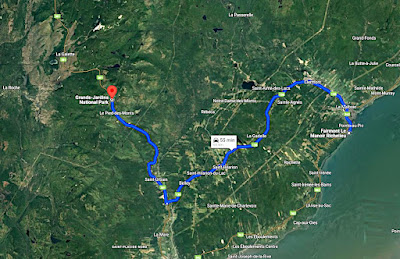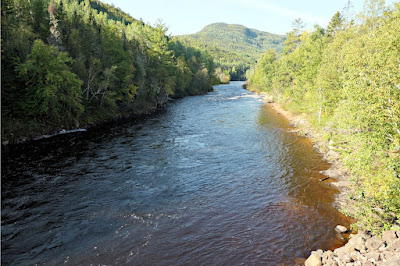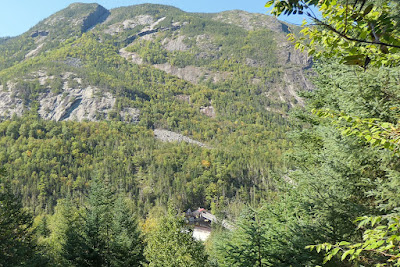A primary goal of our journey aboard the Island Solitude was
to visit all five Watchmen sites within the Gwaii Haanas National Park
Reserve, National Marine Conservation Area, and Haida Heritage Site,
usually referred to simply as Gwaii Haanas. I must provide some background history, compiled and condensed from various sources.
The Backstory
The sites lie within the territory of the Haida people, who have lived there for at least 14,000 years. Oral histories say the Haida lived in Gwaii Haanas when the first trees arrived; pollen samples indicate they arrived 14,500 years ago with the retreat of the Ice Age glaciation.
From the 1970s through the early 1980s, attempts to expand logging of the old-growth forest, including towering spruce, sparked the first efforts to protect Gwaii Haanas. In 1980, the Haida Nation launched a land claim with the Canadian government, asserting its title to the territory. Also, environmental activists proposed designating much of the archipelago as a protected wilderness, but neither the federal nor provincial government acted, and logging continued.
In the fall of 1985, a major forestry company planned to log a fifth of Haida Gwaii’s 60,000 acres of Crown land; the Haida worried that further logging could endanger the local salmon they had long relied on. In October, a Haida chief led a nonviolent blockade of a logging road. Over the next three months, the Haida community and its allies stood fast, even though seventy-two blockaders were arrested.
And the Haida succeeded. In 1987, logging ended when Canada and British Columbia signed the South Moresby Memorandum of Understanding. In 1993, Canada and the Haida Nation signed the Gwaii Haanas Agreement. In a decision released on March 31, 2025, the B.C. Supreme Court dismissed a final $75 million lawsuit brought by a logging company.
The Watchmen
The Haida Gwaii Watchmen program encourages young Haida to work alongside elders to protect and teach visitors about Gwaii Haanas National Park Reserve and Haida Heritage Site. Since the early 1990s, two to four Watchmen have been hired each summer to live at each of five sites, where they remain up to 4 months, acting as stewards of the historic sites and providing historical knowledge and tourist information to visitors. Our Story A goal was to visit all five Watchmen sites during this voyage -- weather permitting. On the morning of May 25, 2025, we sailed from our anchorage at Moresby Camp to the Watchmen site Ḵ'uuna Llnagaay (Skedans). (Click on any image to enlarge.)All our landings were by zodiac. Here's a photo of the Island Solitude after getting ashore.Our watchmen at Skedans were this woman and her young daughter.
All too soon it was time to depart ... as the saying goes, "time and tide wait for no one." We walked back to the beach and boarded our zodiacs.This visit was a great introduction to Haida culture. We sailed on, passing many islets.The afternoon began with zodiac cruising, checking out the living organisms in the tidal zones.A starfish under shallow water. Aren't zodiacs great?Later in the afternoon, we went ashore for a walk and for natural history.
Here's a photo from a large map that the captain and the guide marked up to show our journey. You can see our descent from the upper right (Skedans is off the map to the north) through channels to our anchorage #2, lower left, with a side trip to McEchran Cove -- likely the source of the above photos.
|

































































